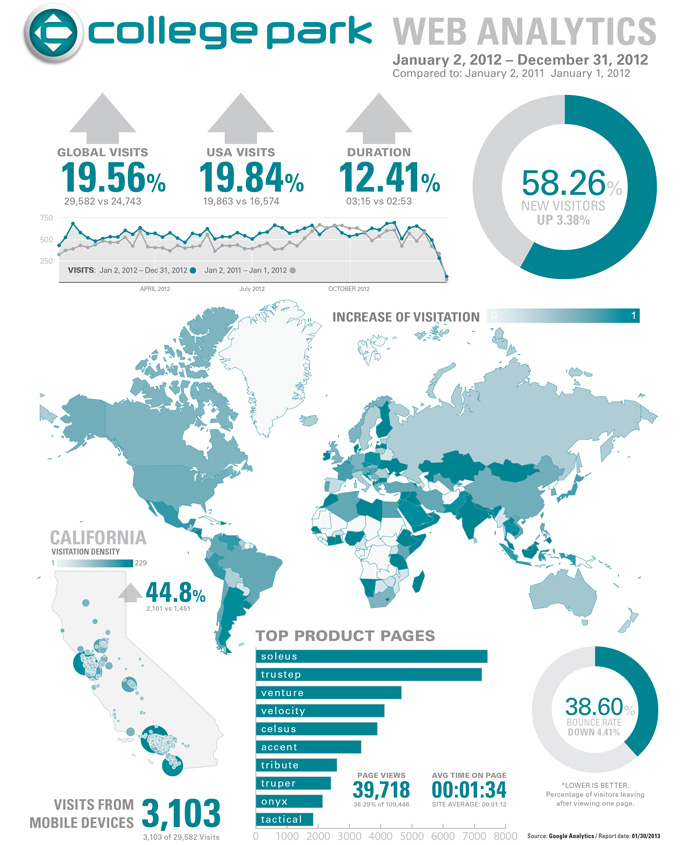Journal of industry thoughts, insights and featured projects
Because sometimes the work speaks for itself, other times it needs a little more...
Redesigning a website for College Park

The Challenge
For almost 15 years College Park had one product, the Trustep® prosthetic foot. As the company grew, so did it’s product line and global distribution. The last 8 years saw an increase of 10 primary foot products, 18 components, and additional electronic testing devices. Marketing materials were updated, but the site remained limited, static, inconsistent with the current branding and difficult to expand or update. As the company continued to grow, the site’s limitations created bigger problems.

So the largest challenge in redesigning a website for College Park, was to create a dynamic site that would address the companies marketing needs, while also solving many common frustrations. The following areas and problems needed to be addressed:
- A site that is consistent in look-and-feel with the current branding and marketing materials.
- Utilizes a content management system for the site structure; enabling real-time changes, automatic scheduling and dynamic content population.
- Organize and group related information for easier searching and cross-reference, while minimizing the number of “clicks”.
- Populates content and files that are optimized for Search Engines and directories.
- Assets that are dynamically linked, that allow for site-wide updates from a single change.
- Site structure that automatically expands as content grows, with modular components that could be easily repurposed or moved.
- A user-centric navigation structure that enhances visitor usefulness and satisfaction.
Behind-the-Scenes Strategy
The site would be purely cosmetic if not for some of the underlying strategies that went into the content creation. Some of the considerations included:
- Promote a consumer-friendly interface, while providing technical information when needed.
- Add a humanistic view to a mechanical prosthetic product.
- Connect individual products to quality-of-life benefits and specific activities.
- Clarify product benefits by visually illustrating and explaining key product features.
- Merge offline promotions with the website content.
- Track and analyze traffic and browsing trends, then used those findings to make adjustments to the site and supporting marketing materials.
Responsibilities
One of the biggest challenges of developing a website in-house, was the limited resources of a smaller company. Text was written by the internal marketing group, while Scott handled the conceptual, design and programming.
- Front-end work included: UI/UX planning, wireframes, layout design, CSS styling, illustrations, banners, SEO and image optimization.
- Back-end work included: Set-up and management of the hosting, DNS allocations, content distribution network (CDN), SSL certificates, coding and debugging.
The Results
After the redesigned site was launched, traffic grew by 15% in the first 3-months and 32% in the following year, while also ranking top in its industry category. While impressive on it’s own, these stats would not be possible without the large array of useful content. Infographics, product features and benefits, digital reference guides, and videos all created an information-rich portal for both users and professionals. When assisting customers, customer service and the sales team now use it as an integral part of their daily reference tools.

Follow-up
The biggest downfall of most sites is the lack of continued additions and improvements, losing visitors interest and trust. To combat that trend, the College Park site is continually updated with the most current information, news and events. A full ecommerce ordering system is in the works, as well as a patient testimonial micro-site, customer training modules and expanded media library.
 Scott Auch
Scott Auch